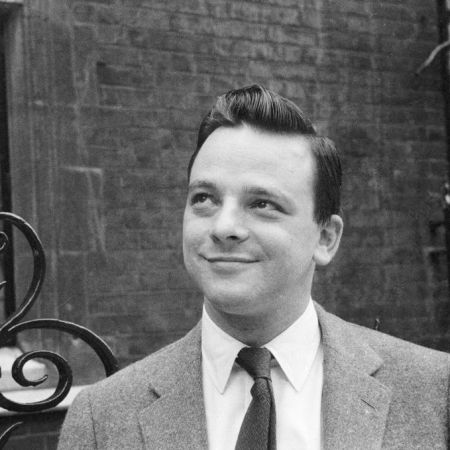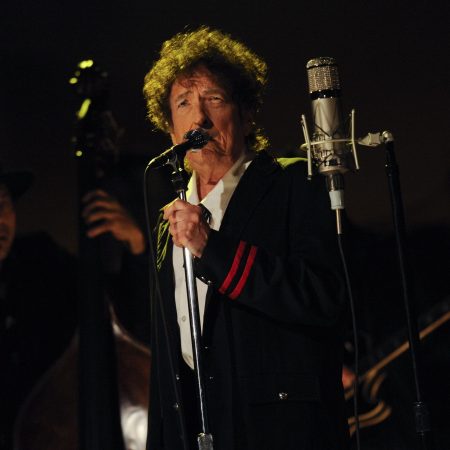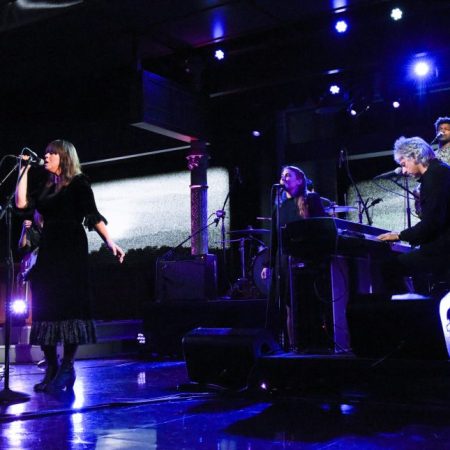If you see a Broadway show once a year, you might be under the impression that musical theater is in a good place. Newer originals like Hadestown are selling out alongside Hamilton, and Lin Manuel Miranda’s first musical In the Heights has a big-budget film adaptation coming soon; as does West Side Story, helmed by Steven Spielberg, which is simultaneously being revamped on Broadway.
Those who pay a little more attention to the section of Manhattan between 41st and 65th Street know that bubbling beneath the headlines of these revolutionary new productions and reimagined classics is a scourge that has the potential to decimate Broadway: the jukebox musical.
Don’t take it from me. In the past few years, The New York Times felt it necessary to wrangle their critics to discuss the problems with the form, and musicals pieced together from the catalogs of chart-topping artists like Jimmy Buffett, Cher, The Go-Go’s and Donna Summer have all opened and closed on Broadway in less than nine months. Even Steve Martin, whose bluegrass musical Bright Star was filled with songs from his albums with Edie Brickell, couldn’t stop his from closing by showing up unexpectedly.
The reasons for putting on a jukebox musical are obvious: a built-in fanbase, cutting out the risk of brand-new music, and the financial success of previous efforts (Abba’s Mamma Mia! and The Four Seasons’ Jersey Boys are both in the top 10 highest grossing Broadway shows of all time). But their proliferation, at least in the current mold, puts Broadway at risk of becoming nothing more than a revenue stream for musicians past their prime, and lessens the likelihood of you, the audience member, seeing a show worth the ever-increasing ticket price.
On Thursday at the Belasco, one of the more intimate Broadway venues, an unlikely hero may just change the tide: Bob Dylan, a decidedly anti-song-and-dance man, leads the marquee for his new jukebox musical Girl from the North Country.
To be clear, Bob Dylan did not have a hand in creating the musical — other than providing his songs, which range from the universal “Like a Rolling Stone” to obscurities known only to completists, like “Tight Connection to My Heart (Has Anybody Seen My Love).” But he did light the proverbial match.
Girl from the North Country is more the baby of award-winning playwright Conor McPherson, who is both the writer and director here. As McPherson describes it, he got a phone call from Dylan’s people who asked if the steadfastly Irish storyteller would consider creating a show around one of America’s most treasured songwriters (and Nobel Prize-winning poets, for that matter).
“Initially I wasn’t sure that Bob Dylan’s music was that kind of musical theater kind of music,” said McPherson in a video from The Old Vic in London, where the show premiered in 2017. Then he came up with the idea to set the story during the Depression in Duluth, Minnesota, Dylan’s birthplace, but before he was born, thus untethering the timeless songs from their release eras. Dylan’s people gave their stamp of approval, as well as free reign over the musician’s entire songbook.
Since the 2017 premiere, Girl from the North Country also played off-Broadway at the Public Theater, and in both instances it garnered both sold-out crowds and near universal praise. The New York Times’ Ben Brantley even called it “the most imaginative and inspired use to date of a popular composer’s songbook in this blighted era of the jukebox musical.”
The acclaim is largely due to the fact that Girl is so different from the traditional jukebox musical that some people refuse to give it that label, and the production itself has been reluctant to even call their show a “musical.” As McPherson has said, it’s more like “music with a play.”
You might be asking yourself: what’s the difference? It’s a good question, and the easiest way to explain it is to compare Girl with the other Bob Dylan musical, The Times They Are a-Changin’ from 2006.
Wait, there’s already been a Dylan musical?! Unfortunately yes. Even though it did make it all the way to Broadway, and had a slight helping hand from Dylan (who is co-credited for orchestrations, which he isn’t for Girl), it only ran for four weeks after it opened because it is a master class in everything wrong with the jukebox musical.
See the difference for yourself:
The Times They Are a-Changin’
Girl from the North Country
Sorry for subjecting you to that first one, but it’s an important piece of context for what will most likely be a successful Broadway run for Girl from the North Country. Dylan and his team know the pitfalls of the jukebox musical all too well, and by experiencing them firsthand they were able to pick an unlikely collaborator in McPherson, and may have begun a new revolution in the theater.
Using pop music as fodder for musicals will continue no matter how many shows flop, but maybe now, producers will stop slapping jazz hands and chorus lines on best-selling songbooks, and instead let real theater artists try something outside the norm — you know, what the musicians themselves did in the first place.
Even The New Yorker, which found more than a few deficiencies in the off-Broadway production, did have this to say: “[Girl From the North Country] often feels less like a musical than like a very sorrowful revue.”
For many Dylan fans, that may be reason enough to get a ticket.
This article was featured in the InsideHook NY newsletter. Sign up now for more from all five boroughs.






















